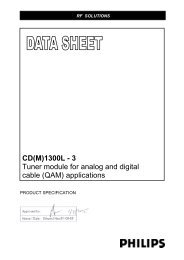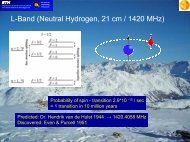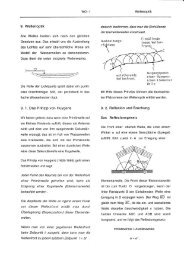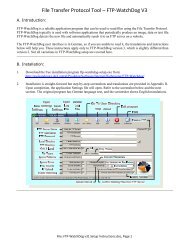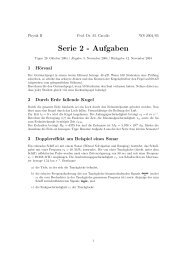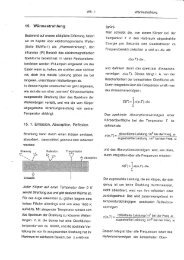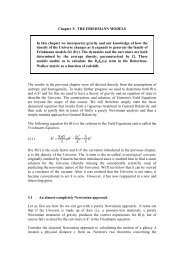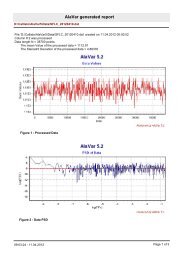here - Institute for Astronomy Umleitung
here - Institute for Astronomy Umleitung
here - Institute for Astronomy Umleitung
Create successful ePaper yourself
Turn your PDF publications into a flip-book with our unique Google optimized e-Paper software.
Title: Science Case<br />
Reference: MUSE-MEM-SCI-052<br />
Issue: 1.3<br />
Date: 04/02/2004<br />
Page: 49/100<br />
The main issue <strong>for</strong> a MUSE survey is the limited field of view (1 arcmin 2 ). The comoving<br />
scale corresponding to 1 arcmin does not change strongly with redshift at z > 2 and is<br />
approximately 2.5 Mpc. For studying the assembly of individual galaxies, surveying scales of<br />
only a few Mpc is sufficient. At turn-around, the 6×10 10 M <br />
of matter which is currently<br />
within the virialized halo of a ~L* galaxy such as the Milky Way is contained within a<br />
volume of radius 750 kpc. Thus a survey field of side 2.5 Mpc should contain all the baryonic<br />
material that will assemble into individual L* galaxies.<br />
The other physical scale of interest is the clustering scale of galaxies, about 5-10 comoving<br />
Mpc. This enters into the issue of sampling variance since it means that the galaxy population<br />
within sp<strong>here</strong>s of this size is highly correlated and the statistics of galaxies are far more noisy<br />
than simple consideration of their numbers would indicate - put another way, the n galaxies<br />
within a sample do not represent n statistically independent entities but rather n/m entities,<br />
w<strong>here</strong> m may be calculated from the correlation function knowing the survey geometry.<br />
Surveys on arc-minute scales are dominated by this sampling variance: a good example is the<br />
very different population of red galaxies in the HDF-N and HDF-S which, on their own would<br />
lead to quite different interpretations of the global star-<strong>for</strong>mation rate.<br />
Given the limited field of view of MUSE, the two strategies <strong>for</strong> overcoming sampling<br />
variance are (a) to observe adjacent contiguous fields to build up a larger area, or (b) to<br />
observe widely separated fields. Of these,<br />
the second is much more efficient: the<br />
statistical weight of the survey builds up as<br />
N 0.5 (w<strong>here</strong> N is the number of MUSE<br />
pointings) w<strong>here</strong>as in (a) the gain is more<br />
like N 0.3 . Thus the optimum survey<br />
strategy would be to observe multiple<br />
widely spaced pointings.<br />
A good feature of this is that this strategy<br />
naturally accommodates the need <strong>for</strong> m ~<br />
17–18 guide stars <strong>for</strong> the AO system.<br />
Un<strong>for</strong>tunately, at present, most of the deep<br />
extragalactic survey fields, and especially<br />
those that have been observed with the<br />
HST) consist of a handful of large<br />
contiguous areas (e.g. GOODS-S 10×16<br />
arcmin 2 ). However, within these, multiple<br />
pointings around available stars could be<br />
made (Fig. 2-26).<br />
Figure 2-26: Potential guide-stars in the CDFS<br />
region, each surrounded by a 90 arcsec radius<br />
region. Axes are decimal degrees in RA and dec




